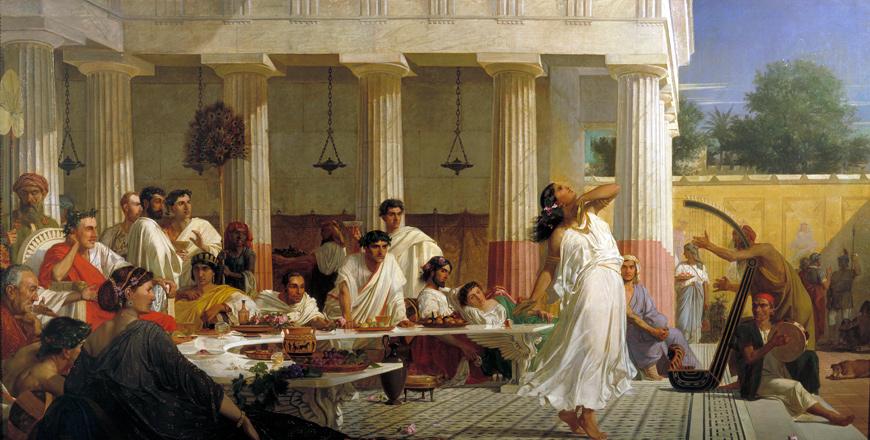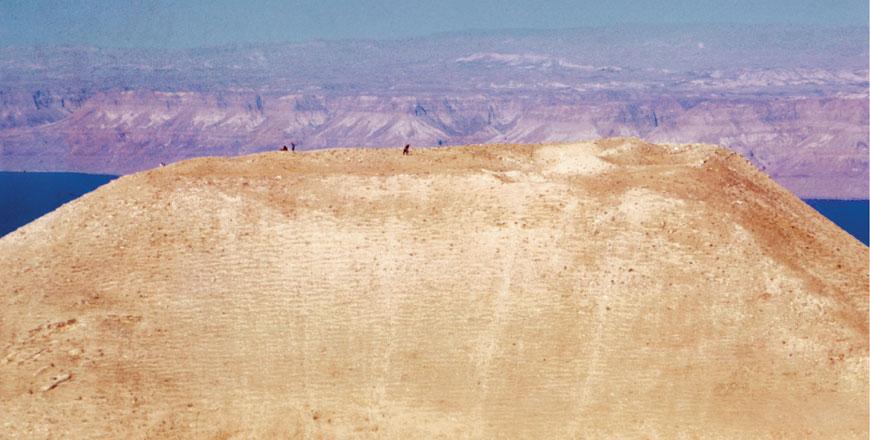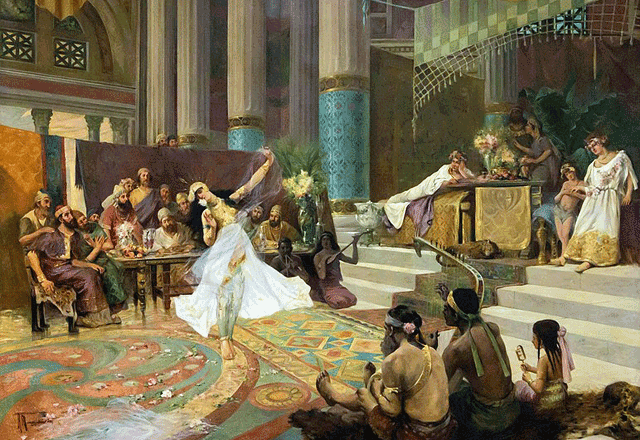You are here
Fortress of Machaerus holds clues to region’s past
By Saeb Rawashdeh - Dec 07,2020 - Last updated at Dec 07,2020

Edward Armitage’s painting from1868, titled ‘Herod’s Birthday Feast’ (Photo courtesy of Gyozo Voros)
AMMAN — For decades, scholars have linked the biblical tradition about the beheading of John the Baptist with the material evidence found at the site overlooking the Dead Sea, according to a Hungarian archaeologist .
The fortress of Machaerus (meaning sword in Greek) was built by the Hasmonean King Alexander Jannaeus in circa 90 BC and was later destroyed by Gabinius in 57 BC, said Gyozo Voros.
It was transformed into a royal palace by King Herod the Great in circa 30 BC and eventually destroyed by the Nabataean King Aretas IV in 36 AD, Voros, who lead the excavation project at the site, told The Jordan Times.
From its hilltop location to the east of the Dead Sea, Machaerus could provide a view all the way to Jerusalem, Masada and Jericho, Voros said.
“Historical events at the fortress are narrated by Josephus [an ancient historian]. The account given by him that Herod Antipas had John the Baptist imprisoned and executed at the fortress is complemented by the descriptions of the Gospels of Mark and Matthew, and also confirmed by Eusebius [260 AD-340 AD],” said Voros.
Combining the accounts in Josephus and the gospels allows Machaerus to be identified as the historical site of the tragic birthday banquet of Tetrarch Herod Antipas, as well as the place where Princess Salome danced.
Furthermore, Machaerus was the only royal palace of King Herod that was inherited by Antipas; therefore, it was the best symbol of his Herodian legacy and “a perfect place for his birthday party”, the archaeologist said.
“The above-mentioned historical sources are in full harmony with the archaeological research on the site. The first 50 years of excavations [from 1968 to 2018] were conducted by three academic institutions: Southern Baptist Theological Seminary, Studium Biblicum Franciscanum and the Hungarian Academy of Arts, and revealed the complete fortified Herodian royal palace,” Voros stressed,
Voros said that “there are thousands of images and representations related to Herodian Machaerus in the history of art. The most common subjects are Salome bringing the head of the Baptist on a salver to Herodias and the beheading of John the Baptist itself. These portrayals — in Bible illustrations, frescos, reliefs, icons in churches and paintings — usually reflect contemporary European royal castles and courts, with the figures wearing medieval, renaissance, or baroque costumes rather than ancient garments.”
At the site, the team found 53 ostraca (potsherd used as a writing surface) with Aramaic, Hebrew, Greek and Latin inscriptions, 137 datable coins, over 10,000 ceramic pieces, cooking vessels, storage jars and several amphorae, according to Voros .
Related Articles
AMMAN — Prior to 1968, the hilltop of Machaerus, overlooking the Dead Sea near Mount Nebo was an untouched “virgin” site, according to Hunga
MUKAWIR — Pilgrims and visitors to the 2,000-year-old Citadel of Machaerus will be able to authentically envision the point in history when
AMMAN — Isolated in the middle of a rocky mountain plateau that dominates the Dead Sea lie the ruins of the Herodian fortress Macaereus, whe














